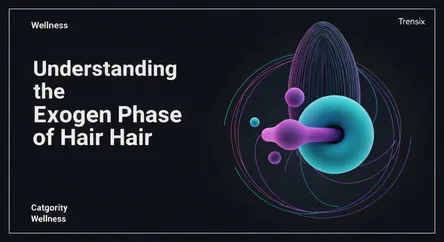Wellness
Understanding the Exogen Phase of Hair

Learn about the exogen phase, the natural shedding stage of the hair growth cycle, and why managing it is key for healthy, full hair.
What is it?
The exogen phase is the final stage in the natural hair growth cycle, characterized by the shedding of old hair from the scalp. Often considered an extension of the telogen (resting) phase, this is a crucial renewal process where the hair follicle releases the hair strand, making way for new growth. It is perfectly normal to shed between 50 and 100 hairs each day during this phase, which can last for two to five months. This process ensures that new, healthy hairs can grow, maintaining the overall density of your hair over time.
Why is it trending?
Increased awareness around hair health and the causes of hair thinning has brought the entire hair growth cycle, including the exogen phase, into focus. People now understand that excessive shedding can be linked to disruptions in this cycle. Factors like stress, nutritional deficiencies, and hormonal changes can prematurely push more hairs into the resting and subsequent shedding phase, a condition known as telogen effluvium. Consequently, the wellness and beauty industries are emphasizing scalp care, targeted nutrition, and stress management techniques to promote a balanced hair cycle and minimize excessive hair fall.
How does it affect people?
For most individuals, the exogen phase is a subtle, ongoing process that goes unnoticed. However, when an imbalance occurs and shedding exceeds the normal rate, it can lead to visible hair thinning and cause significant concern. Understanding that excessive shedding is linked to an irregular exogen phase empowers people to take proactive steps. This can involve improving their diet, managing stress levels, or choosing hair care products designed to support follicular health and prolong the anagen (growth) phase. Recognizing the signs of a disrupted cycle helps people address the root causes of their hair loss more effectively.